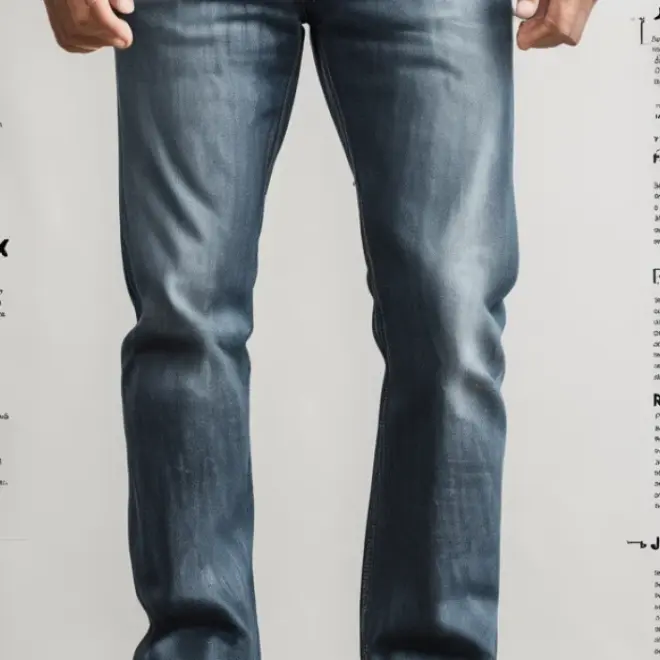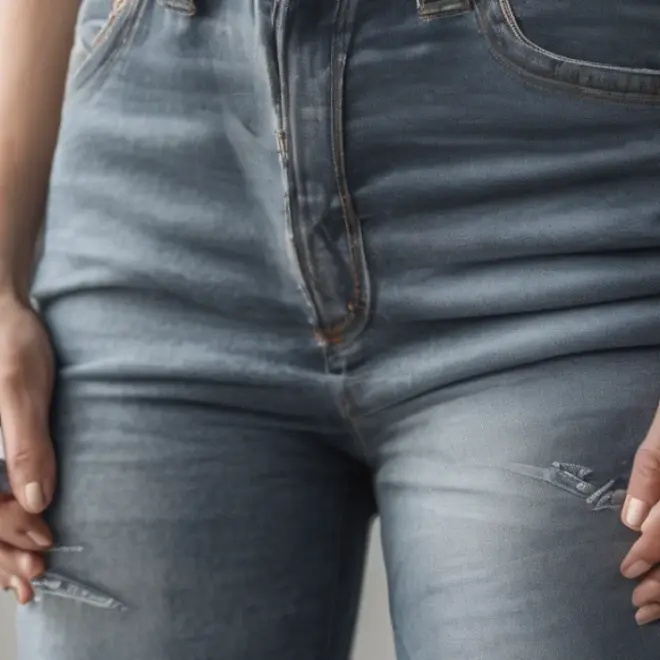Quick Summary: Hemming tapered jeans without sewing is surprisingly easy using the “shampoo method.” This technique uses fabric glue and a bit of clever folding to create a neat, permanent hem that looks professionally done, perfect for anyone wanting a custom fit without a machine.
How to Hem Tapered Jeans: The Genius Shampoo Method for a Perfect Fit
Tapered jeans are a modern wardrobe staple, offering a flattering silhouette. But what happens when they’re just a little too long? Altering the hem on tapered jeans can seem daunting, especially if you’re not a seasoned sewer. You might worry about getting the fit just right, or that a DIY job will look messy. Don’t let a few extra inches of denim hold you back from looking sharp. This guide will walk you through a simple, effective method to precisely hem your tapered jeans, ensuring a clean, professional finish every time, using common household items.
We’ll break down the process into easy-to-follow steps, explaining exactly what you need and how to use it. By the end, you’ll not only know how to fix your jeans, but you’ll feel confident tackling other simple clothing alterations. Let’s get your favorite pair of tapered jeans fitting you perfectly.
Why Hem Tapered Jeans?
Tapered jeans are designed to narrow from the knee down to the ankle. This shape can be fantastic, but it also means the hem length is crucial for the overall look. Jeans that are too long can:
- Bunch up around your shoes, creating an unattractive silhouette.
- Make you appear shorter than you are.
- Wear out prematurely at the hem from dragging.
- Disrupt the intended clean line of the taper.
Finding perfectly fitting jeans off the rack can be a challenge. Tapered styles, in particular, rely on the exact placement of the hem to showcase their shape. That’s where hemming comes in. It’s about achieving that perfect, customized fit that makes your jeans look tailor-made.
Introducing the “Shampoo Method” for Hemming
You might be wondering about the “shampoo method.” This isn’t about washing your jeans, thankfully! Instead, it’s a clever name we’ve given to a no-sew hemming technique that relies on a strong fabric glue and a specific folding process. The key is using the glue to create a durable bond that mimics a traditional hem, while a precise folding technique allows you to manage the excess fabric unique to tapered styles.
This method is ideal for beginners because it eliminates the need for sewing machines, needles, and thread. It’s quick, relatively inexpensive, and the results are remarkably durable. You’ll be able to achieve a clean, professional-looking hem that’s built to last through wears and washes.
What You’ll Need: The Essential Toolkit
Gathering the right supplies is the first step to a successful hemming project. You likely have most of these items already at home, making this method incredibly accessible.
Here’s what you’ll need:
- Tapered Jeans: The pair you want to hem.
- Fabric Glue: A strong, flexible fabric adhesive is crucial. Look for brands specifically designed for hemming or fabric repair. Brands like Gorilla Fabric Glue are known for their strength and flexibility. Ensure it’s washable and dryable.
- Sharp Fabric Scissors: For a clean cut if you need to trim excess fabric.
- Measuring Tape or Ruler: For accurate measurements.
- Fabric Chalk or a Removable Fabric Marker: To mark your desired hemline.
- Iron and Ironing Board: To press the folds crisp and ensure a strong bond.
- Cardboard or a Thin Book: To insert inside the jean leg to prevent glue from seeping through to the other side.
- Patience and a Flat Surface: A clear space to work on is essential.
Step-by-Step Guide: Hemming Your Tapered Jeans
Getting the perfect hem on tapered jeans requires a little extra attention to detail due to the narrowing leg. Follow these steps carefully for a flawless finish.
Step 1: Prepare Your Jeans and Workspace
Start by washing and drying your jeans. This removes any sizing or finishes that could interfere with the glue’s adhesion and ensures you’re working with the fabric in its final state. Find a well-lit, flat surface to work on. Lay one jean leg flat, smoothing out any wrinkles.
Step 2: Determine Your Desired Hem Length
Put on the jeans (or wear shoes that you typically pair with them) to accurately gauge the length. Standing in front of a mirror, visualize where you want the hem to fall. Consider the taper – the hem should hit at the point where the jeans naturally narrow to your desired width. If you’re unsure, it’s always better to err on the side of slightly longer; you can always trim more, but you can’t add it back.
Pro Tip: For tapered jeans, the ideal hem often just brushes the top of your shoe or boot. For a more casual look, you might want them slightly shorter to create a subtle stacking effect.
Step 3: Mark the Hemline
With the jeans still on (or carefully removed and laid flat), use your fabric chalk or marker to mark where you want the bottom of the hem to be. If you took them off, ensure the leg is laid perfectly flat and smooth. Use your measuring tape to measure from the inseam (crotch seam) down to your desired hem point and mark it. A good technique for tapered legs is to mark the desired length at the inseam and then again at the outer seam, then connect the dots with a straight line. However, because tapered jeans curve inward, a more accurate method is to:
- Lay the jeans flat.
- Measure from the existing hem upwards to your desired finished hem length. Mark this point on the OUTSIDE seam of the leg.
- Now, measure from the existing hem upwards at the INSEAM. This measurement will likely be slightly shorter than the outer seam measurement due to the taper. Mark this point.
- Repeat this process a few more times around the leg circumference to get a sense of the curve.
- Connect these marks with your fabric marker to create your cutting and folding line.
You’ll want to add about 1.5 to 2 inches (4-5 cm) below this final marked line for your folding allowance. This extra fabric will be folded up to create the new hem. So, mark your final desired hem line, and then mark another line about 2 inches below that. This second line is your cutting line if you need to trim, or your fold line.
For accuracy, especially on tapered jeans, using a ruler and marking the distance from the crotch seam to the desired hem will give you a consistent length around the leg. You can also buy inexpensive hemming clips that help create a straight line.
Step 4: Trim Excess Fabric (If Necessary)
If you marked your desired hemline and have significantly more than 2 inches of excess fabric below it, you may want to trim. Lay the jeans flat and carefully cut along the second line you marked (about 2 inches below your desired finished hem). This ensures you have enough fabric for a substantial fold, which creates a cleaner, more durable hem.
If you only need a small adjustment, you might get away with just folding the existing fabric without trimming. However, with tapered jeans, a slightly larger fold often works better visually.
Step 5: Fold the Hem
This is where the “shampoo method” starts to get clever and avoids bunching on tapered legs.
- Lay the jean leg flat again, smoothing out all wrinkles.
- Fold the bottom edge of the jean leg UPWARD to meet your marked final hemline. You should have about 2 inches of fabric folded over. Press this fold firmly with your iron. This creates a crisp crease.
- Now, insert your piece of cardboard or thin book inside the jean leg, directly behind the folded-up hem. This prevents the fabric glue from sticking the front of the hem to the back of the leg, or seeping through and creating a visible line.
- Carefully unfold the hem slightly, leaving the crease you just made.
- Apply a thin, even bead of fabric glue along the top raw edge of the fabric that you just folded upwards. Be precise; you don’t want glue bleeding onto the visible part of the jean. The glue should run along the crease you made.
- Gently refold the hem, pressing the glued edge down firmly onto the inside of the leg, right along the crease you made. Ensure the folded edge sits neatly against the inside of the leg, aligning perfectly with your initial marked hemline.
- Press down firmly with the iron over the glued area. Use medium heat; check your fabric glue’s instructions. Iron for about 15-30 seconds in one spot, then move to the next. This heat helps activate the adhesive for a strong bond.
- Repeat this pressing process along the entire circumference of the hem.
Addressing the Taper: The key here is that you made the initial fold along your desired finished hemline, then applied glue to the raw edge and folded it up to meet that line. Because you’re working with the natural curve of the tapered leg during this process, the fold naturally follows the shape. The cardboard insert is crucial for keeping the inside clean. You’re essentially creating a “double fold” on the inside of the jeans that the glue secures.
Step 6: Let it Cure
Once you’ve glued and ironed the entire hem, leave the jeans flat and undisturbed for the amount of time recommended by the fabric glue manufacturer. This “curing” time is essential for the bond to reach its maximum strength. While it might feel permanently set after a few minutes, give it at least a few hours, or ideally 24 hours, before washing or putting significant stress on the hem.
Step 7: Final Check and Wear
After the curing period, turn the jeans right-side out. Check the hem for evenness and ensure there are no stray glue marks. Give it a final light press with the iron if needed. Now, try them on! You should have a perfectly hemmed pair of tapered jeans that fit like they were made for you.
Pros and Cons of the Shampoo Method
Like any DIY technique, the shampoo method for hemming tapered jeans has its advantages and disadvantages. Understanding these will help you decide if it’s the right approach for you.
Pros:
- No Sewing Required: Perfect for those who don’t own a sewing machine or lack sewing skills.
- Speed and Efficiency: Much faster than traditional hemming.
- Cost-Effective: Uses inexpensive materials, saving money on professional alterations.
- Clean Finish: When done carefully, it looks remarkably professional.
- Durable: Good quality fabric glue creates a strong, washable bond.
- Flexibility: Easily adjustable if you make a mistake or change your mind (though best done correctly the first time).
- Excellent for Tapered Legs: The folding technique accounts for the narrowing shape without causing excess bulk.
Cons:
- Glue Mistakes: If not applied carefully, excess glue can create stiff spots or visible marks.
- Durability Over Time: While durable, extremely heavy wear or frequent washing in very hot water might eventually weaken the bond more than traditional stitching.
- Ironing Skills Needed: Requires careful ironing to activate the glue effectively without damaging the fabric.
- Not for All Fabrics: Best for sturdy denim. Very lightweight or delicate fabrics might not hold the fold or glue as well.
- Potential for Stiffness: If too much glue is used, or the wrong type, the hem might feel a bit stiff.
Alternative Hemming Methods for Tapered Jeans
While the shampoo method is excellent for a quick, no-sew fix, other options exist depending on your comfort level with crafts and sewing.
1. Traditional Sewing Machine Hem
This is the most durable and professional-looking method. It involves folding the fabric twice as described above, pressing, and then stitching it down with a sewing machine. For tapered jeans, you’d still need to manage the curve, but the stitch provides the strongest hold.
2. Hand Sewing
If you have basic hand-sewing skills, you can achieve a neat hem without a machine. A blind hem stitch is ideal as it’s nearly invisible from the outside. It requires more time and patience than the shampoo method but is more durable.
3. Fusible Hem Tape
Similar to fabric glue, fusible hem tape (or hemming web) is a flexible adhesive strip activated by heat from an iron. You place the tape between the two layers of fabric, iron over it, and create a permanent bond. It’s another great no-sew option, offering a similar result to the shampoo method but using a tape rather than a liquid glue.
4. Professional Tailoring
For a guaranteed perfect fit and finish, especially on expensive jeans or for a very precise look, taking them to a professional tailor is always an option. They have the expertise and tools to handle any fabric and style perfectly.
Frequently Asked Questions (FAQ)
Q1: Can I really achieve a good hem with just shampoo and glue?
The “shampoo method” uses fabric glue, not shampoo! It’s a clever no-sew technique that relies on fabric glue and precise folding to create a durable hem without sewing. It’s surprisingly effective and popular for quick clothing fixes.
Q2: How do I ensure the hem looks straight on tapered jeans?
Measuring carefully from the inseam at multiple points around the leg, or using a tailor’s chalk to draw a consistent curved line, is key. Always press your folds crisply to maintain the shape before applying glue.
Q3: How much fabric should I leave for the hem?
For this method, aim to leave about 1.5 to 2 inches (4-5 cm) of fabric below your desired finished hemline. This gives you enough material for a substantial, clean double fold on the inside.
Q4: Will the fabric glue wash out?
No, good quality fabric glue is designed to be permanent and washable. Always follow the product’s instructions for washing and drying your garments after hemming.
Q5: What if I make a mistake with the glue?
Some fabric glues can be repositioned within a short time frame. If the glue has set, you might be able to carefully peel it apart. If not, you may need to trim the hem and start again, or use a seam ripper if you’ve already sewn it. For the shampoo method, carefully removing the cardboard insert is crucial to prevent sticking.
Q6: Can I use this method on skinny jeans or other pant styles?
Yes! This method works well for most pant leg styles, including skinny, straight-leg, and bootcut jeans, though the precise folding might need slight adjustments for extremely wide legs.
Q7: How long will a glued hem last?
With durable fabric glue and proper care (avoiding harsh detergents and high heat in the wash), a glued hem can last for years. However, it typically won’t be as robust as a sewn hem for very active wear or frequent, intense washing.
Maintaining Your Hemmed Jeans
Once you’ve perfected your hem, a little care will ensure it lasts. Always follow the fabric glue’s instructions for washing. Generally, washing your jeans inside out in cold water on a gentle cycle is best. Avoid using bleach, as it can degrade the adhesive over time.
When drying, opt for air drying if possible, or use a low heat setting in your dryer. Excessive heat can weaken the glue bond. For any touch-ups or to ensure the crease stays sharp, a quick press with an iron on a medium setting (without steam) can be beneficial.
Conclusion
Hemming tapered jeans doesn’t need to be a complicated or expensive endeavor. The “shampoo method” using fabric glue offers a straightforward, effective, and accessible solution for achieving a custom fit at home. By following these detailed steps, you can transform ill-fitting jeans into your favorite pair, ready to wear with confidence. Remember to measure accurately, fold precisely, and allow the glue to cure fully for the best results. With a little practice, you’ll be hemming all your pants like a pro, ensuring every pair in your wardrobe fits you perfectly.









